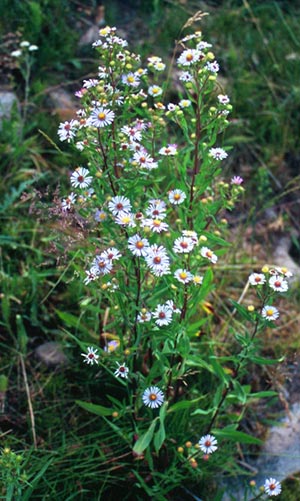Western Aster

Common Name(s):
Western Aster
Pacific Aster
Purple Aster
Long-leaved Aster
Scientific Name:
Symphyotrichum ascendens (Lindl.) Nesom
Scientific Name Synonyms:
Aster ascendens Lindl.
Aster macounii Rydb.
Aster subgriseus Rydb.
Virgulaster ascendens (Lindl.) Semple
Symbol:
SYAS3
Description:
Life Span: Perennial
Origin: Native
Season: season goes here
Growth Characteristics: An open, branched perennial from a rhizome or branching caudex, growing up to 50 inches tall. It flowers from July to October.
Flowers: Six inch flower spikes with 2 inch purple flowers. The flower heads are small with conspicuous outer bracts reflexed outwards. The disk flowers are yellow and the 15-40 ray flowers are pink to lavender and range from 5-15 mm long.
Fruits/Seeds: An achene.
Leaves: The stem leaves are very short and linear and close to the stem. The basal leaves are long and narrow. All leaves are entire margined and smooth surfaced. The leaves range from 1 – 5 inches long and up to 1 inch wide. They are rather thick and rough-margined, and vary from smooth to more or less hairy.
Stems: Slender, 9 inches to 2 feet tall, and more or less hairy, especially above.
Roots: Rhizomatous
Ecological Adaptions:
Western Aster can survive in wet to dry habitats. It is often found in mountain meadows and openings in coniferous forests, or on plains, hills, and moist banks, growing at elevations from 6500 – 8500 feet in Utah.
Soils: Loams
Uses and Management:
There is evidence that Western Aster absorbs selenium, which may cause it to be poisonous.

